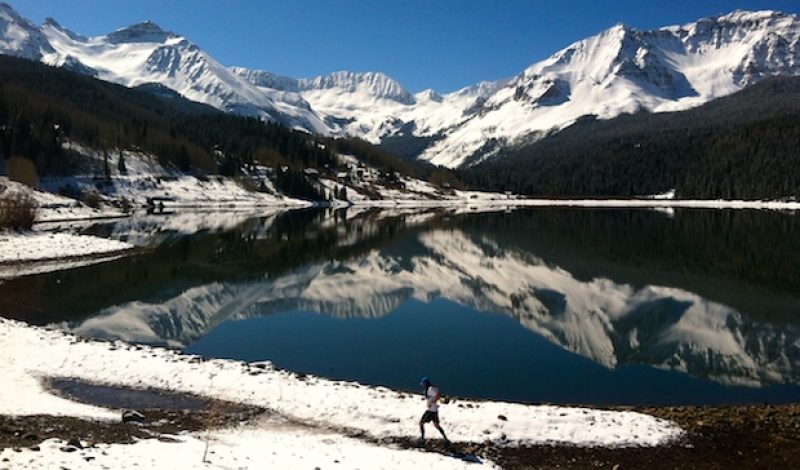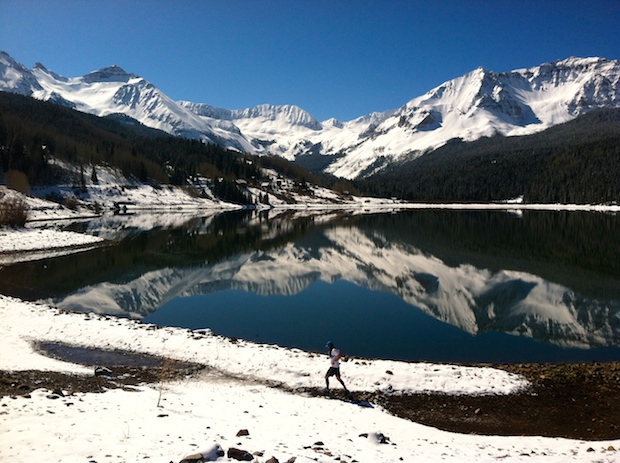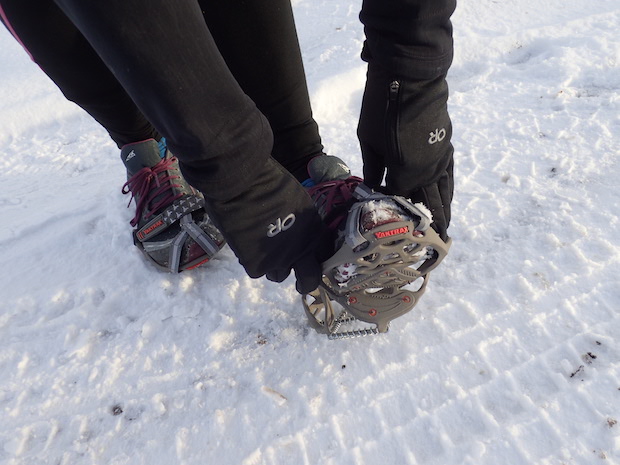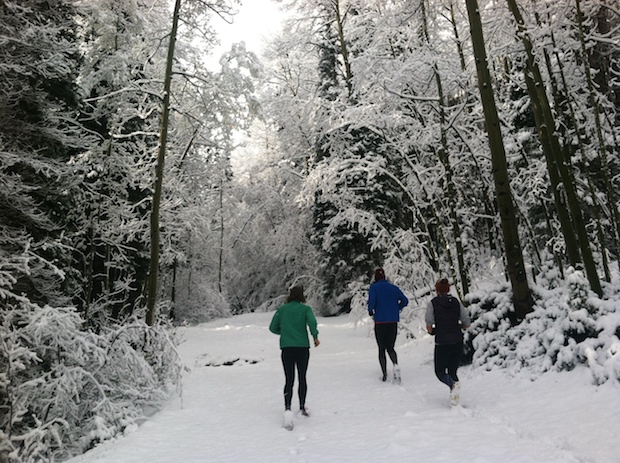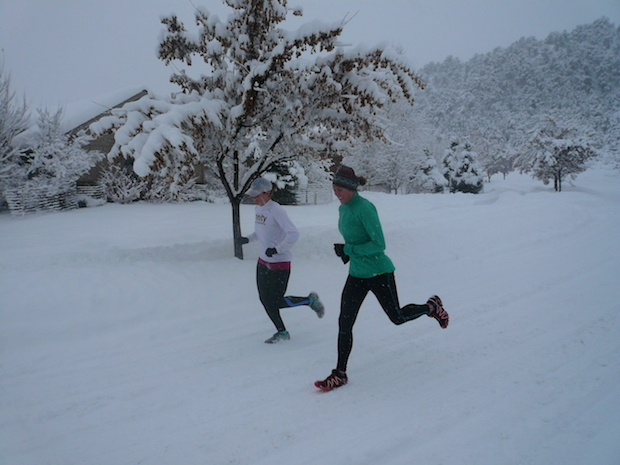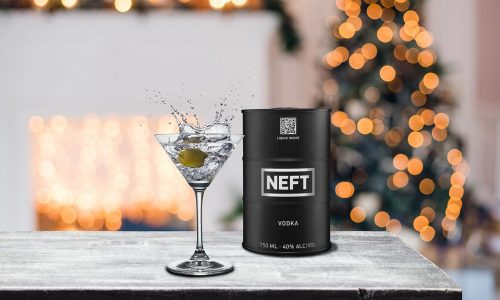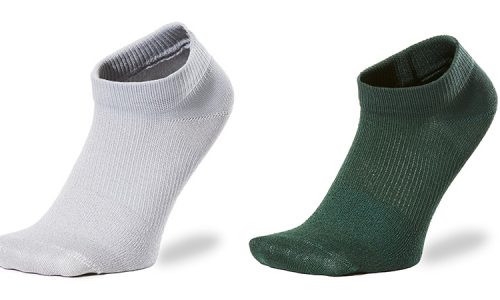When the weather’s sunny and warm, it’s easy enough to get motivated to get out the door for a run. In the depths of winter, though, when temperatures dip below freezing, wind chill whips your face, and your usual running route may be blanketed in snow or ice, motivation may come less easily.
And yet, few pursuits are as satisfying as a crisp, cold run outdoors—especially when the rest of the world is busy suffering cabin fever. With a few tweaks to your running shoes and gear, you may be surprised to find yourself falling in love with winter trail running.
1. Avoid frozen hydration hoses.
If you run with a pack and have ever suffered from a frozen hydration tube, try this trick next time: after you’ve had your drink, blow hard into the mouthpiece until all the water has disappeared from the hose. This can prevent it from freezing up on you.
2. Winterize your trail-running shoes.
Depending on the climate where you live, there’s a good chance your favorite trails are snow- or ice-coated for some part of the winter. To combat snow: choose trail-running shoes with a waterproof or water-resistant upper—or, at the very least, try to avoid those with ultralight mesh uppers which will leave you with rapidly soaked – and often freezing – feet.
If you’re planning to run on icy terrain, or on heavily trafficked snowy trails (which can become packed down and thus more slippery than fresh snow), you’ll probably want to invest in some winterized traction. Kahtoola, Hillsound and Yaktrax all offer great options for trails in the form of traction devices or flexible crampons.
3. Keep your feet warm, dry and happy.
If you can do so comfortably, choose a thicker sock to aid with both warmth and dryness; thin socks may wet out quickly in snow and lead to frozen toes. Wear knee-high or crew-length socks to add an element of warmth around your ankles and shins, especially for running in deeper snow.
Finally, donning a pair of short, running-specific gaiters (Dirty Girl Gaiters are a perennial favorite of many trail runners) can especially help with keeping snow and moisture out.
4. Layer up.
The right layering system makes all the difference in the world. If it’s chilly but not freezing, a long-sleeve, merino-wool base layer paired with a vest can go a long way in keeping your core comfortable. Depending on your local climate, use a vest that is made of fleece, light insulation, or a thin windproof synthetic fabric. The advantage of wearing a vest over a long-sleeve base layer is that it prevents the internally clammy sweat buildup of having two full layers of fabric around your arms.
The further the temperature drops below freezing, the more you may want to double up on layers—two tops, two bottoms, etc. Opt for mittens (or even just a pair of warm socks worn on your hands) instead of gloves if your fingers are sensitive to cold.
5. Protect exposed skin.
If you’re running in sub-freezing temperatures or in areas with high wind chill, it’s of paramount importance to protect any exposed skin. Cover up as much as you can with apparel and accessories, such as:
- balaclava
- Buff or other multifunctional neck gaiter
- wind briefs (for the fellas)
- gloves or mittens
- arm sleeves or arm warmers
- ear warmers or a warm hat or cap
For any remaining bits of closed skin prone to windburn or other skin irritation, you can apply a bit of petroleum jelly, or evne SPF lip balm in a pinch.
6. Beware the sun.
If the sun is shining, be sure to also lather up on sunscreen and SPF lip balm. This is especially crucial if you’re at higher elevations (UV radiation rises by about 10 percent for every 1,000 feet of altitude) or running in snowy environs, which roughly doubles one’s UV exposure.
Wear sunglasses to protect your eyes. An additional benefit is that sunglasses can provide a barrier against wind chill that may otherwise make your eyes water, or irritate the delicate skin around them.
7. Handwarmers: not just for hands.
Pop into any retail shop or kiosk at a ski resort, or most any outdoor gear shop in the winter, and you’re likely to see racks upon racks of handwarmers for sale. These handy (no pun intended), air-activated, one-time-use packets can provide hours of focused heat to most anywhere on your body.
They’re great, of course, for their intended purposes of keeping your fingers and toes cozy—but many a trail runner has stashed them in sports bras, underwear, face balaclavas, against the stomach or anywhere else on the body that needs a little boost of heat to stay cozy.
Hopefully these tips will help you stay warm and comfortable on the trail during the winter. After all, why should we let a little thing like cold weather keep us from running outdoors?








